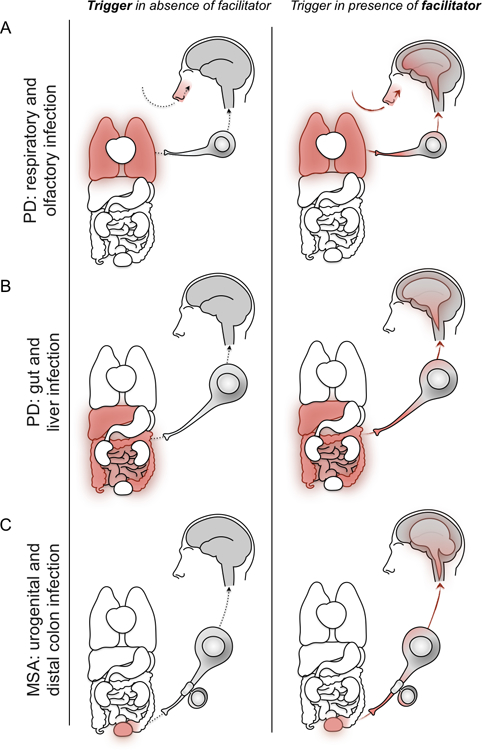Fig. 1.

Potential routes of entry for infectious triggers of alpha-synucleinopathies. (A) Infectious triggers of Parkinson’s disease (PD) may infect respiratory system tissues, including the nasal passage, innervated by the olfactory nerves of the olfactory bulbs, and the lungs, innervated by the vagus nerve (left). In the presence of facilitators, alpha-synuclein (αSyn) deposition occurs in neurons before propagating interneuronally along these nerves to the olfactory bulbs and brainstem before spreading through the brain (right). (B) Infectious triggers of PD may also infect gastrointestinal system tissues, including the liver and intestines, which are innervated by the vagus nerve (left). In the presence of facilitators, αSyn propagates interneuronally along the vagus nerve to the brainstem before spreading through the brain (right). (C) Infectious triggers of multiple system atrophy (MSA) may enter the body and infect tissues of the urogenital system or distal colon (left). In the presence of facilitators, αSyn deposition occurs in Schwann cells and oligodendrocytes. αSyn transfers between these cells and neurons to the brainstem, from which alpha-synucleinopathy spreads in the brain, including the cerebellum (right).
